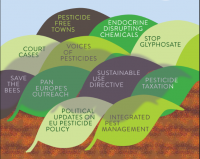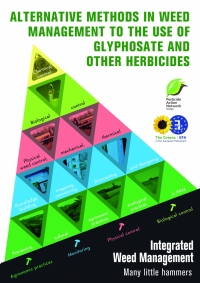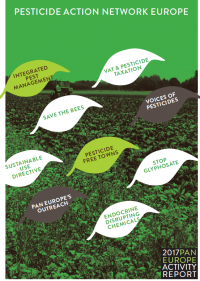Reports
Carcinogens in our food: Pesticide metabolites with (un)known carcinogenic potential end up in our food
DG SANTE's prolongation policy
In 2008 EU Commission health service DG SANTE started its notorious program to allow 88 banned pesticides acces to the market again, the so-called “Resubmission". Many of the most toxic pesticides such as Metam-sodium, Malathion, Bromuconazole, Bifenthrin, Prochloraz, etc. were approved mainly on political grounds and because of the threat of massive industry-sponsored court cases.
"Moving towards agro-ecological practices in Europe" - PAN Europe's recommendations for UN Committee on Food Security's 46th General Assembly
White Paper: Ensuring a Higher Level of Protection from Pesticides in Europe
The White Paper, coordinated by Pesticide Action Network (PAN) Europe and produced by a group of 24 experts from the field of pesticides, risk assessment, human and environmental health identifies the many shortfalls in the safety assessment of pesticides in Europe that lead to dangerous substances being used in open spaces. The analysis also proposes concrete solutions on how to improve the pesticide risk assessment in Europe in line with the mandatory requirements of EU law.
Alternatives to Herbicide Use in Weed Management – The Case of Glyphosate
This second edition of the report on ‘alternative methods in weed management to the use of glyphosate and other herbicides’ has been published as a contribution to the ongoing discussions among some Member States, led by France, on phasing out glyphosate and promoting alternatives.
Activity Report 2017
This Annual Report outlines our work in 2017 to seriously reduce dependency on pesticides in Europe and to support safe and sustainable pest control methods. Enjoy reading!
Ríos hormonados: Contamination of Spanish Rivers with Pesticides
Extensive Presence of Endocrine Disrupting Pesticides in Spanish Rivers- SUMMARY in English
Industry wrItIng Its own rules
Research done by the Pesticide Action Network reveals that in 92% (11 out of 12) of the EU-methods for pesticide risk assessment ex- amined, it was the industry that designed and/or promoted their regulatory use. Industry is writing its own rules. This is a major con- ict of interest. The cases concern criteria and methods (risk assess- ment methodologies) on HOW the rules of the pesticide Regulation 1107/2009 should be used in decision-taking on individual pesticides. In most cases European Food Safety Authority, EFSA, drafted the guidelines on the use of these criteria and methods.





